Urine Therapy for Cancer
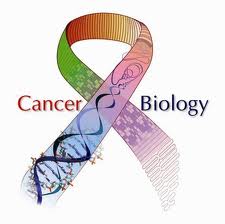
Special Instructions for Cancer Patients for Urine Therapy
Urine, urea and Cancer:
Another important ingredient that urine contains is urea. Scientists estimate that 25% of the urea in an adult finds its way into the intestines, where it is decomposed into ammonia by intestinal bacteria. Some of this ammonia ends up in the liver, where part of it is converted into urea, and another part is converted into glutamine, an extremely useful amino acid. Because of its healing effect on ulcers and wounds in the intestinal canal, glutamine is essential in the maintenance and construction of specialized tissue, such as in the brain, the small intestine and in the growth and activity of the mucous membrane of the intestinal canal. The most important function of glutamine, though, is its ability to strengthen the immune system, and could be an important key in explaining why urine therapy is such a successful method of treatment. Another noteworthy application of urea can be found in the treatment of cancer by Professor Evangelos Danopoulos, who used urea in treating breast cancer, liver cancer, and several other kinds of cancer. Danopoulos noticed that the urea seemed to disrupt the ability of cancer cells to group together and apparently killed the cells by upsetting some of their normal metabolic activities. He experimented with injecting urea mixed with a saline solution in and around skin cancer and as a treatment for breast cancer. He conducted research on drinking urea dissolved in water in order to fight liver cancer, and reported positive results. In 1969, Danopoulos did a study on oral urea treatment in treating liver cancer. He gave 2-2.5 grams of pure synthetic urea to 18 patients with liver cancer, four to six times daily in capsules, syrup, or as powder. Out of those patients, eight had primary carcinoma and ten had tumors with liver metastases. In the primary-cancer group, two patients were alive after 57 and 36 months. In four patients, death seemed to be related to an interruption of urea treatment where they reportedly stopped their treatment after feeling better. And two patients died of apparently detached illnesses. The average survival period with the urea treatment was 26.5 months, five times greater than any previous reports, without or without the urea treatment.
In the metastatic group, the efficiency of urea treatment could not be judged by survival since the tumor tissue outside of the liver was more than likely not affected. While being on the urea treatment, all of the patients had a reduction of their liver enlargement. Six patients were still alive at the end of the study. Two patients who had liver metastases from breast and colon, were healthy at 19 and 13 months, respectively. One patient was in good condition after 17 months, and the other patient, who had a general disseminated disease and a moderate liver enlargement, was in fair condition at 40 months. After his study, Danopoulos concluded that the results justified formal trial of urea in primary liver cancer and also in metastatic cancer, since the results indicated a regression of liver cancer with oral urea treatment (Danopoulos ED. et al., 1974). Professor Danopoulos also began combining urea with creatine hydrate, another component of urine, and in this way, reportedly treated other kinds of cancers successfully.
By Dr. G.K.Thakkar.
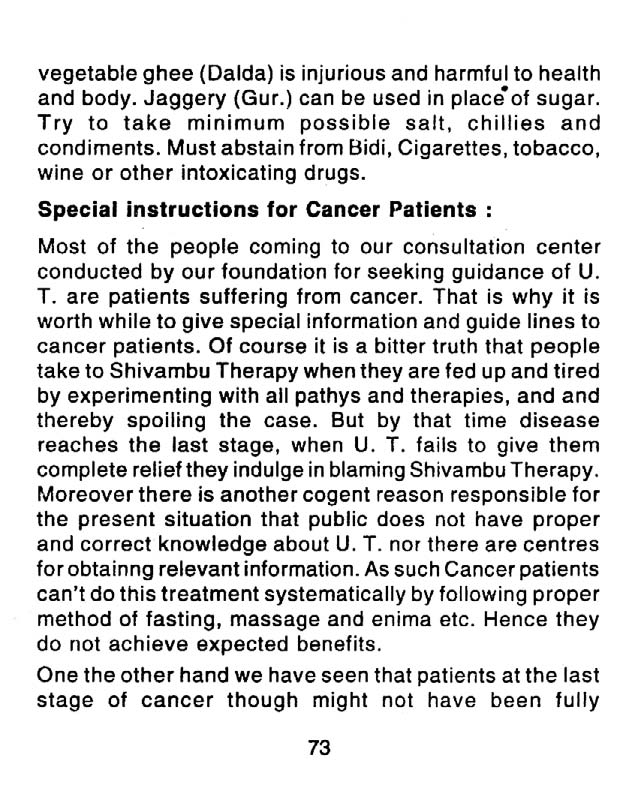
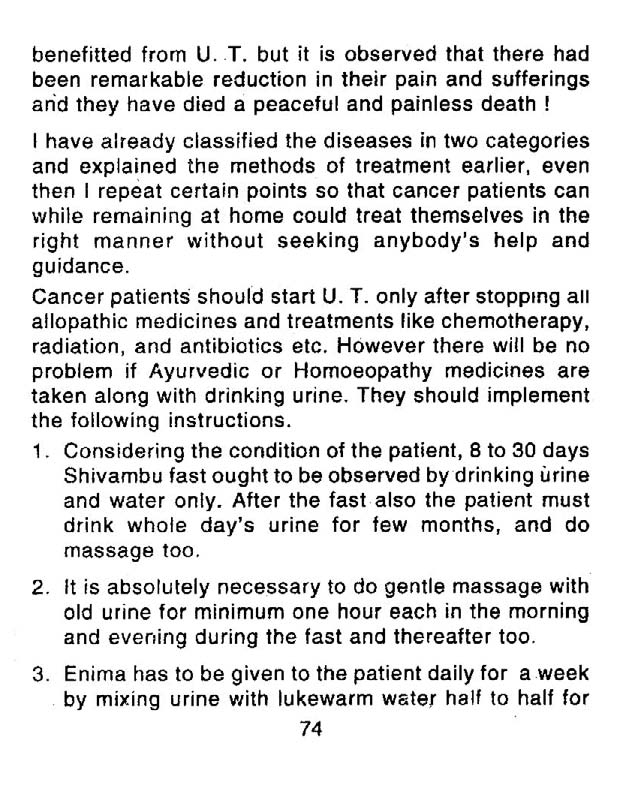
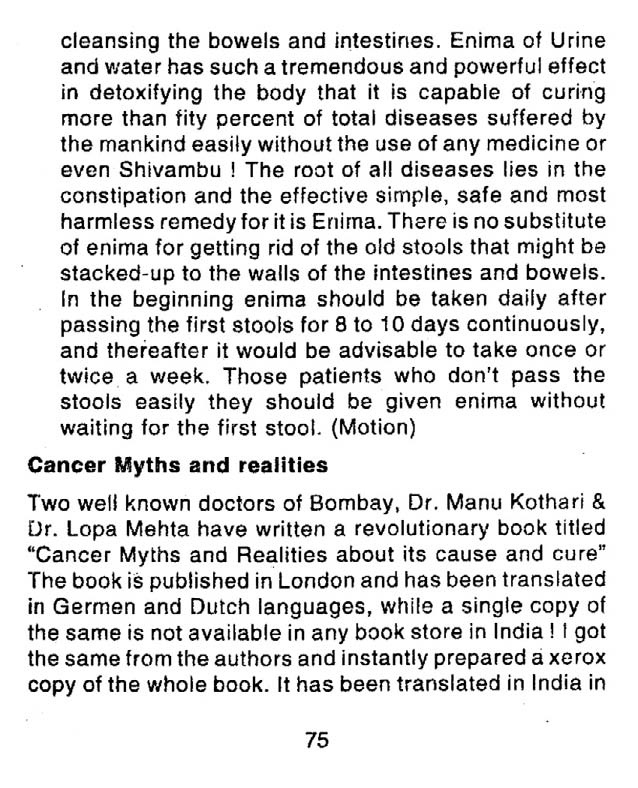
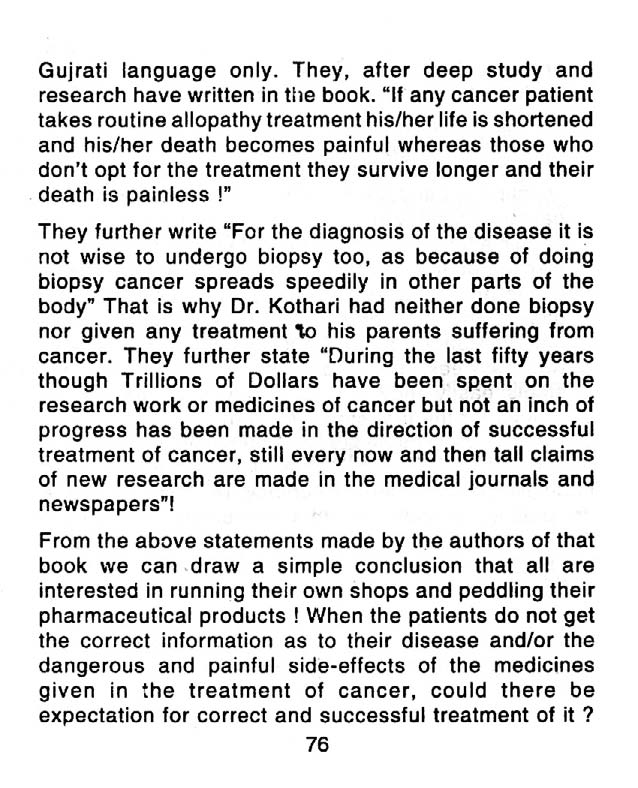
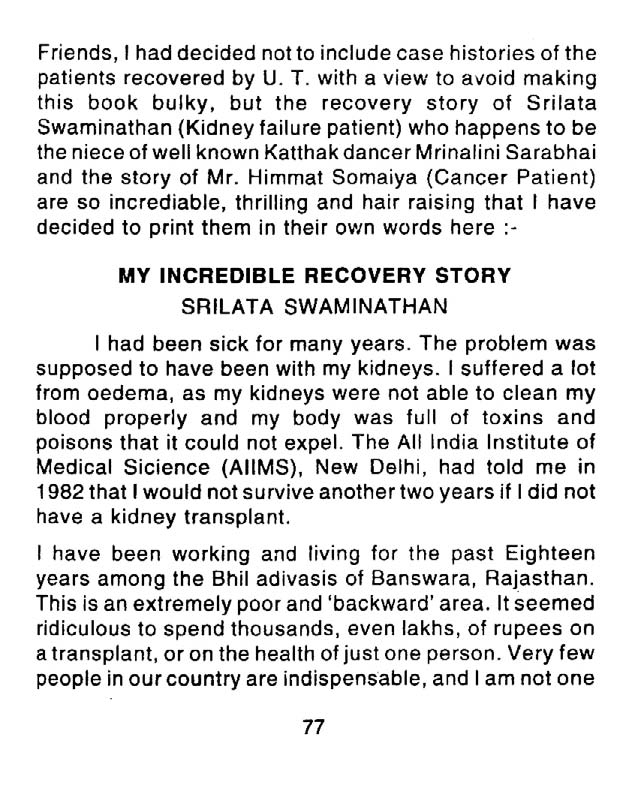
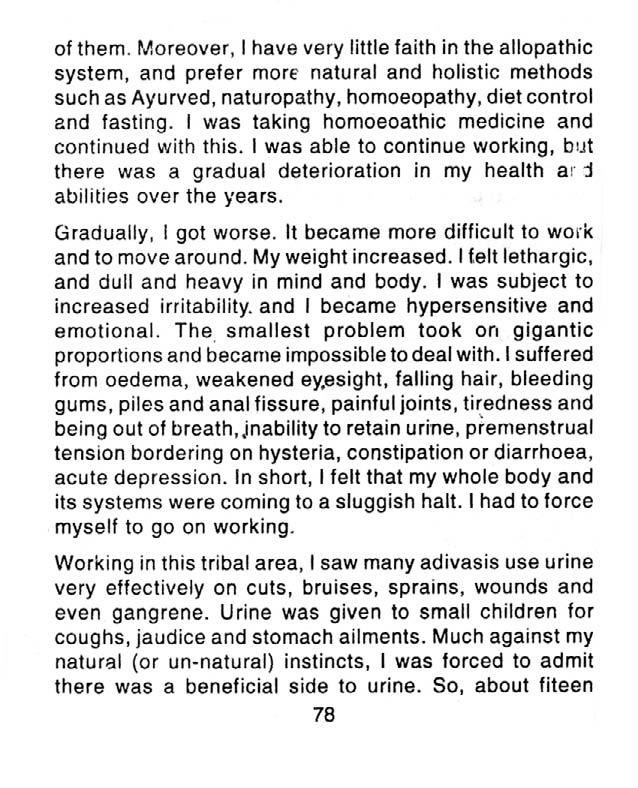
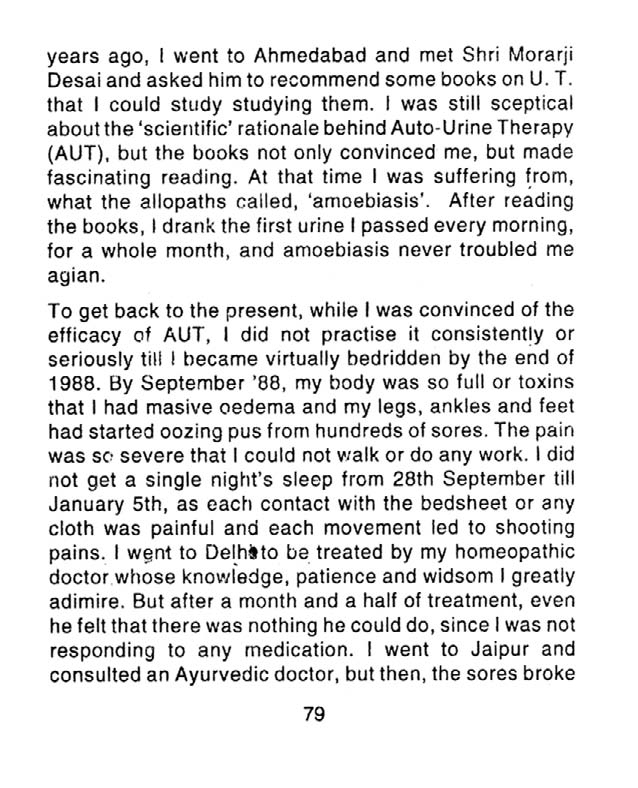
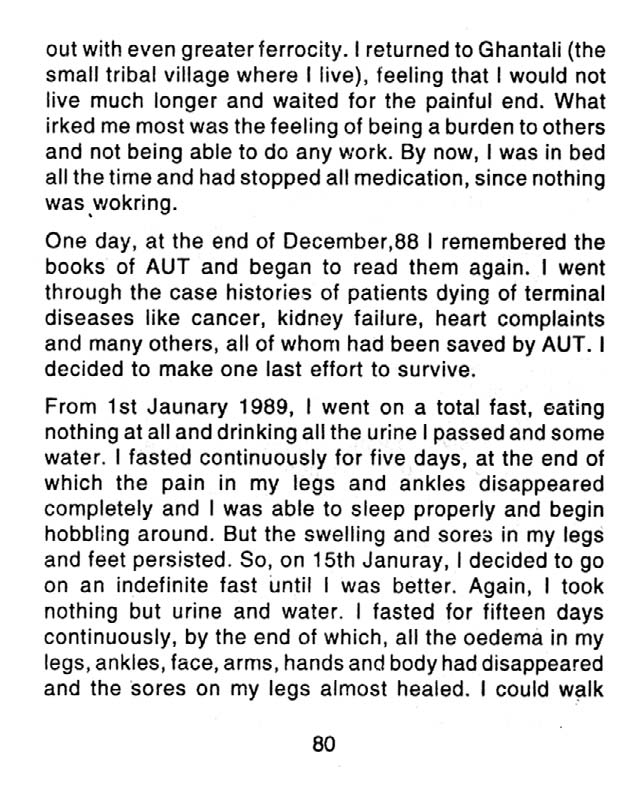
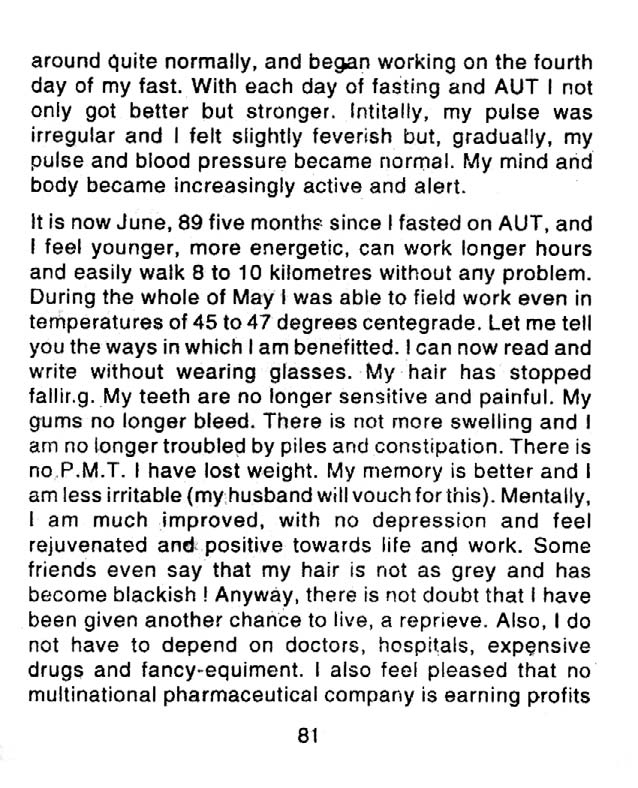
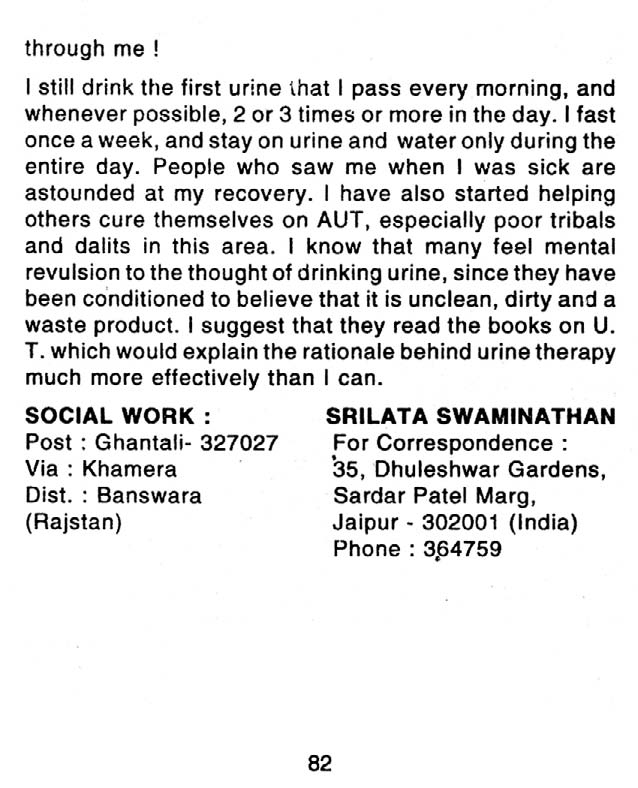

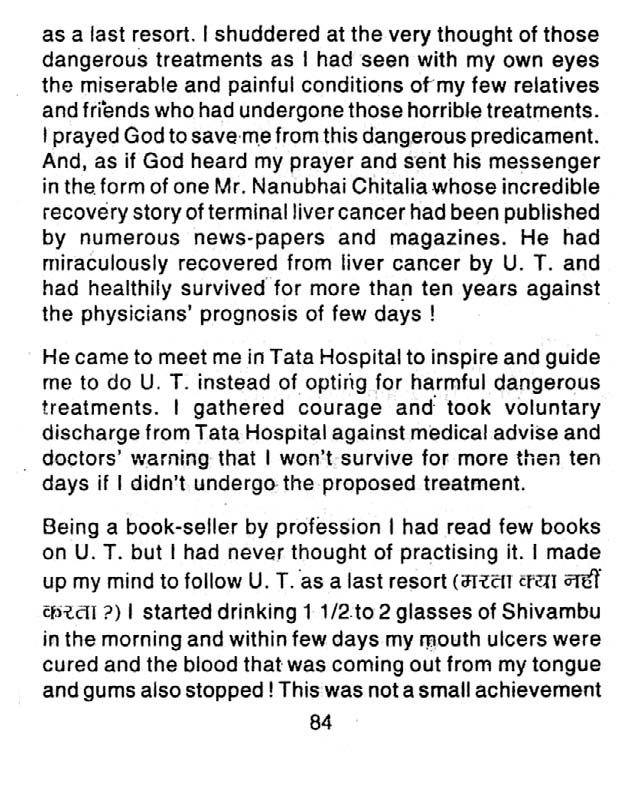
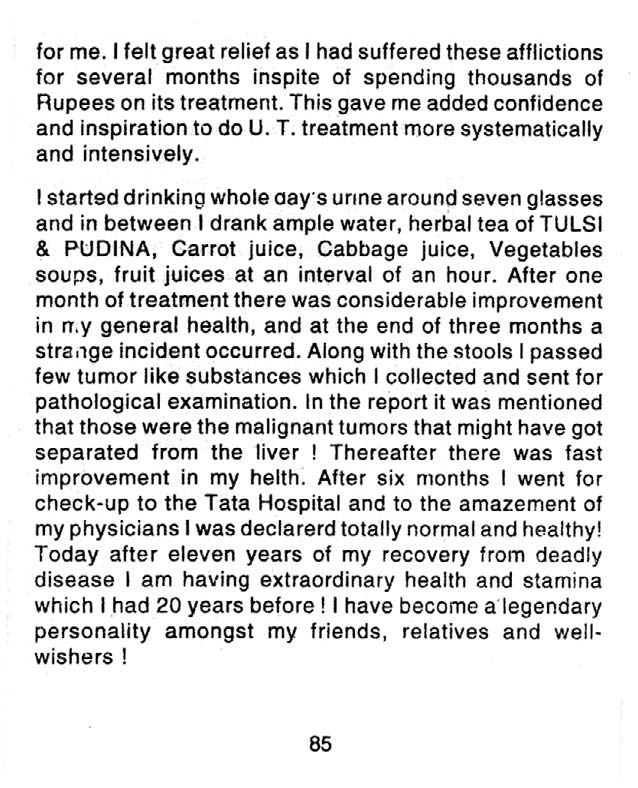
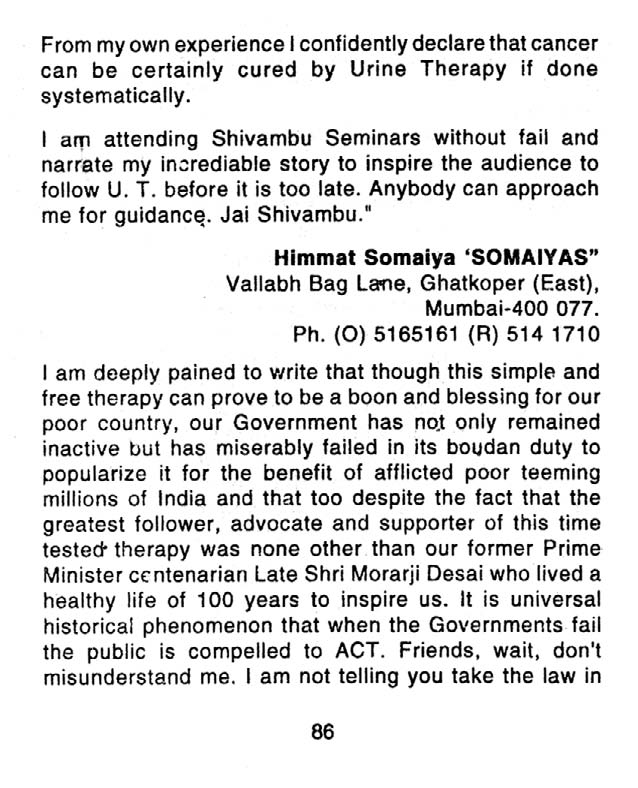
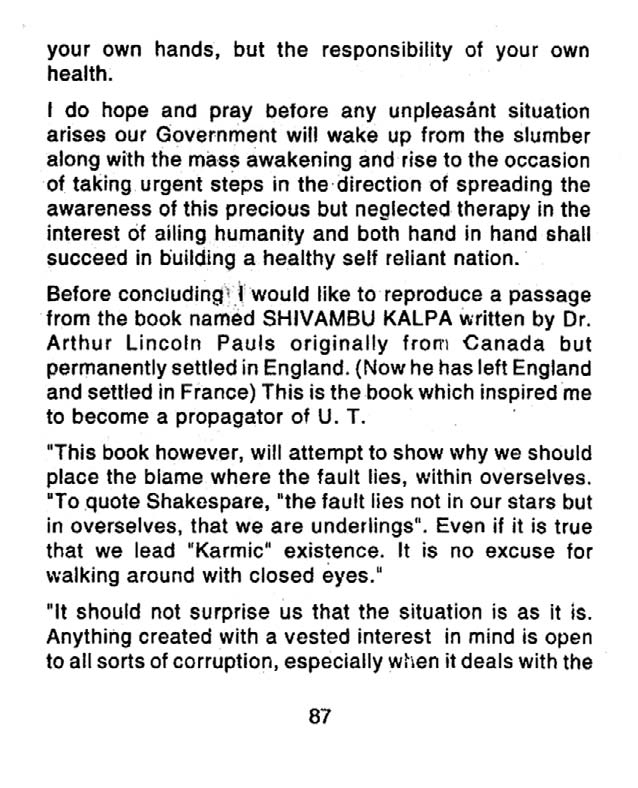
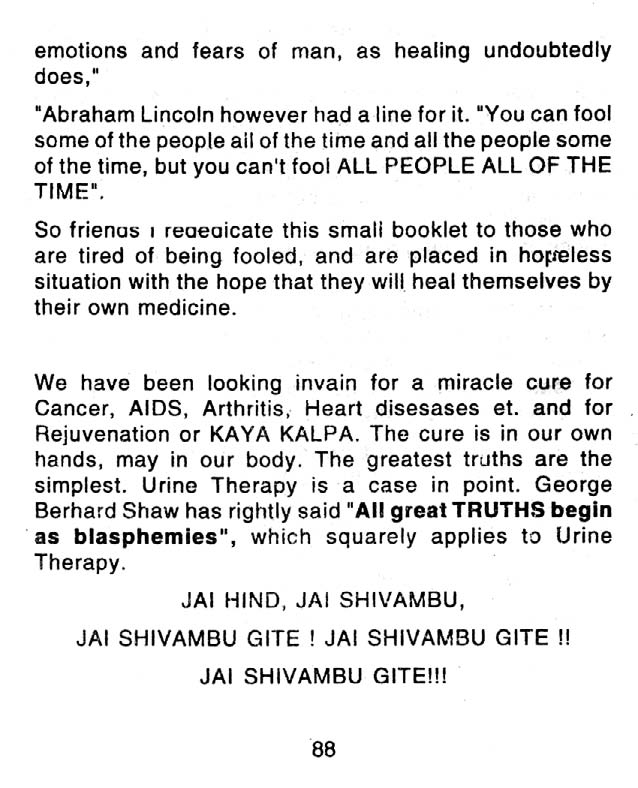


Quick Links
- Home
- About Us
- Water Element- Self Urine Therapy
- About Urine Therapy
- Introduction
- Urine Test
- Scientific Information
- How to Do Urine Therapy
- Information on Urine Therapy
- WORLD CONFERENCE ON URINE THERAPY
- VDO on 6th world conference
- HEALTH CENTERS AND WEB SITES ON UT
- BOOKS ON URINE THERAPY
- AUDIO ON URINE THERAPY
- VIDEO ON URINE THERAPY
- PICTURES on UT
- Urine Therapy Federation of India
- Members of UTFI
- Pictures UTFI
- SELF EXPERIENCES & CASE HISTORY
- Common Questions
- Urine Therapy By
- Natural Healing by Sunil Munot
- UT BY COEN VAN DER KROON
- UT BY MARTHA CHRISTY
- UT BY MARTIN J LARA
- UT BY SWAMI SATYANANDA SARASWATI
- UT BY DEVENDRA VORA, M.D.
- UT by Mike Crowley
- UT By Renee Sunsprit
- UT BY NATALIA PERERA
- UT BY FLORA PESCHEK-BÖHMER PH.D.
- UT BY BIOMEDX
- UT BY DR.G.K.THAKKAR – SHIVAMBU GITA
- UT BY SHIRLEYSWELLNESSCAFE.COM
- UT BY JOHN F. KELLY
- UT BY AHMEN HEAVEN
- UT BY AGAMA YOGA
- UT BY WALTER LAST
- UT BY ALLDEAF.COM
- UT By Cameron Karsten
- Ut by Damar Tantra
- UT By Tony Scazzero
- UT Information by Don Orina
- Best Drinking Water
- SEA WATER
- About Urine Therapy
- Earth Element
- Fire Element
- Air Element
- Sky Element
- Sixth Element
- Chronic Diseases
- Cleaning Elements
- Important links
- Jain links
- Visitors Mail
- Gallery
- Video
- Our Inspiration
- Contribution
- Contact Us

